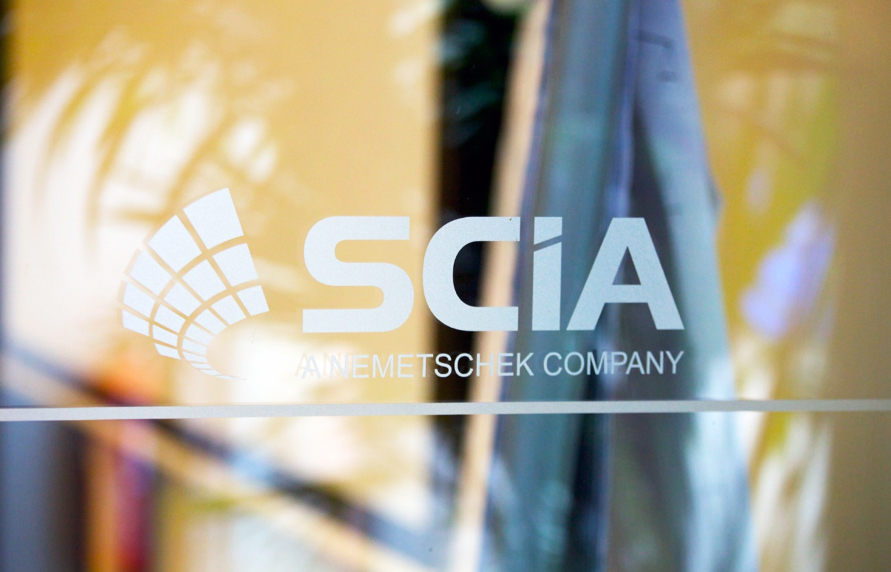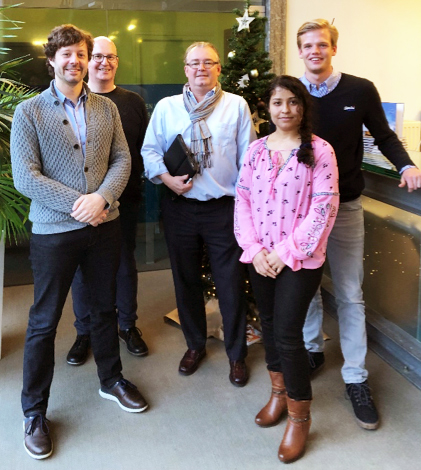

From Maryland to Belgium
Starting at the end of November, I spent four interesting weeks at SCIA, one of Nemetschek’s 16 brands, in Herk-de-Stad, Belgium.
Subscription and pay-per-use – what’s best?
On my first day, I received a warm welcome by Sara Shafaq, the Product Marketing Manager and the rest of the SCIA team.
The task I was working on for the next for weeks was defined as a qualitative market research about subscription and pay-per-use within the software industry. I heard the terms “subscription” and “pay-per-use” before but that is all I was able to say about it in the beginning of my internship. Now I know more. In general (very general) terms, a subscription is a non-perpetual license agreement that has recurring and predictable revenue.
Subscription and pay-per-use are purchase models that are historically not used within the software industry but became more and more relevant due to a change in big software providers like Adobe and Autodesk. A subscription illustrates a new option for customers to buy software with the big difference that they will never own the software as an asset which means that the customers can use the software as long as they pay for it. On the other hand, the recurring (monthly, quarterly, annually) fee is usually lower than the high upfront investment for a perpetual license, although costs for a subscription are often higher for the customer in the long term. Moreover, subscriptions costs are counted as operational expenses and can be recharged for project-based license use. A perpetual license is booked as an asset and will be amortized over a certain amount of time. Subscription allows the customer to have way more flexibility within a license portfolio but as Maynard Webb said “Flexibility has become a modern-day value that everyone wants. But flexibility comes with a cost.”
Personally, I think that subscription and especially its flexibility, the low recurring fee and the different cost type advantage, will become more relevant for European clients in the near future.
Of differences and unique points
The first difficulty was to define the differences and unique points of various purchase systems. At what moment does a subscription become a pay-per-use system? What payment frequency for the customer and what kind of revenue type for the providing company type goes with a subscription, a maintenance contract or a pay-per-use system?
I answered those questions by executing extensive desk research and having interviews with colleagues from the Nemetschek Group.

Business models beyond subscription and pay-per-use
After I collected different expertise and views on subscription, I dived into the two core questions of my research:
- Which markets and regions are ready for subscription and pay-per-use?
- Which subscription and pay-per-use models could be a further purchase option for clients?
By interviewing different customers and sales teams in Belgium, Germany, East Europe, the United Kingdom, Netherlands, France, and the Nordic countries I was able to gain a first impression of the market situation and the demand within each country. Based on those interviews and chats, I created a heatmap for Europe and ranked the regions on their readiness. By having further conversations with experts from different Nemetschek brands and executing competitor research, I was able to define different subscription and pay-per-use business models that could be an interesting alternative to the perpetual license agreement for the client.

Heading home
On my last day of work, I presented my results to the members of the management team and innovation board before I headed home, back to Germany on December 21st. All in all, I have had a very educational and exciting time abroad.
Konzernzentrale:
NEMETSCHEK SE
Konrad-Zuse-Platz 1
81829 München
© 2018 NEMETSCHEK SE
US-Niederlassung:
NEMETSCHEK INC
1875 Connecticut Ave NW
10th Floor
Washington, DC 20009
USA
Tel. +49 89 540459-0
Fax +49 89 540459-444
E-Mail kontakt@nemetschek.com
Anfahrtsbeschreibung als PDF

 (20 votes, average: 4.85 out of 5)
(20 votes, average: 4.85 out of 5)